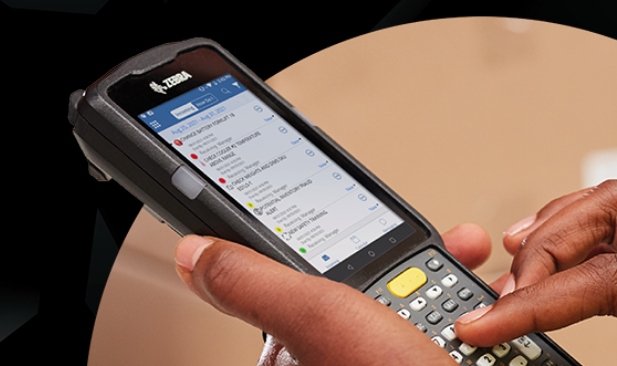In the ever-evolving landscape of technology, RFID (Radio Frequency Identification) solutions have emerged as a game-changer, offering a superior alternative to traditional barcodes. While barcodes have served as reliable identifiers for decades, RFID technology brings a new level of efficiency and accuracy to various industries. This article delves into the world of RFID solutions, exploring their advantages, applications, and how they are transforming operations across diverse sectors.
The Evolution from Barcodes to RFID
Barcodes, with their simple lines and patterns, have been the go-to method for tracking and identifying products, assets, and inventory. However, they come with limitations, such as line-of-sight scanning, susceptibility to wear and tear, and the need for manual input. RFID technology, on the other hand, takes identification and tracking to a whole new level by using radio waves to communicate between tags and readers.
Warehouse management systems have long relied on barcodes as the primary tool for tracking and identifying products, assets, and inventory. The straightforward arrangement of simple lines and patterns made barcodes the trusted choice for streamlining operations. Nonetheless, limitations have emerged over time, including the requirement for line-of-sight scanning, susceptibility to wear and tear, and the inherent demand for manual input.
In the realm of modern warehouse management, a technological advancement has taken the spotlight: RFID technology. This innovation propels the realm of identification and tracking to an entirely new echelon. Unlike traditional barcodes, RFID technology harnesses the power of radio waves to facilitate seamless communication between RFID tags and readers. This communication occurs within an electronic realm, erasing the need for direct physical interaction.
The integration of RFID technology within a warehouse management system offers multifaceted benefits. Foremost is the liberation from line-of-sight scanning constraints, a prevalent hindrance in barcode usage. With RFID, items can be identified and tracked regardless of their placement or orientation, revolutionizing the speed and precision of inventory management.
Furthermore, the vulnerability of traditional barcodes to wear and tear is mitigated by the durability of RFID tags. Resilient against environmental factors and the rigors of handling, these tags ensure prolonged efficiency and reliability throughout the product lifecycle.
Perhaps the most remarkable evolution is the reduction in manual input. In contrast to manual barcode scans, RFID technology enables swift and automated data capture. This feature significantly curtails the potential for human errors, enhancing data accuracy and refining the overall efficacy of the warehouse management system.
As the warehouse management landscape evolves, it is clear that thermal printing labels and static barcodes are yielding ground to the dynamic capabilities of RFID technology. The era of radio wave-enabled communication between tags and readers has ushered in a new era of efficiency, accuracy, and automation in the realm of inventory and asset management.
Advantages of RFID Solutions
Real-time Visibility: RFID enables real-time tracking without the need for direct line-of-sight. This translates to improved accuracy and visibility across the supply chain, from manufacturing to distribution and retail.
Efficiency and Automation: RFID systems can read multiple tags simultaneously, drastically speeding up processes like inventory management, asset tracking, and checkout in retail environments.
Reduced Human Error: Automation through RFID reduces human intervention and the potential for errors that can occur when manually scanning barcodes.
Enhanced Data Accuracy: RFID data is highly accurate, minimizing discrepancies and providing reliable insights for decision-making.
Durability and Longevity: RFID tags are typically more durable than barcodes and can withstand harsh environmental conditions, making them suitable for industries like manufacturing, construction, and logistics.
Security and Anti-Counterfeiting: RFID technology can be embedded with encryption and authentication features, making it harder for counterfeit products to infiltrate the supply chain.
Applications Across Industries
Retail: RFID solutions optimize inventory management by providing real-time visibility into stock levels, reducing out-of-stock instances, and enhancing the shopping experience.
Logistics and Supply Chain: RFID enables accurate tracking of shipments, reducing transit time, enhancing traceability, and minimizing losses due to theft or mishandling.
Manufacturing: RFID streamlines production processes by tracking work-in-progress, ensuring quality control, and minimizing bottlenecks.
Healthcare: RFID aids in asset tracking, patient identification, and inventory management, enhancing patient care and reducing errors.
Automotive: RFID improves supply chain visibility for automotive manufacturers, enabling them to monitor parts, manage recalls, and enhance quality control.
Agriculture: RFID solutions are used to monitor livestock, track produce, and manage agricultural assets efficiently.
Overcoming Challenges and Implementation
While RFID offers numerous benefits, implementation requires careful planning and investment. Challenges such as tag costs, interoperability, and privacy concerns must be addressed. Moreover, organizations need to ensure compatibility between existing systems and new RFID infrastructure.
RFID technology has opened doors to a new era of tracking, identification, and data management. Beyond the limitations of traditional barcodes, RFID solutions provide unparalleled accuracy, automation, and real-time visibility across industries. As businesses seek innovative ways to enhance efficiency and reduce errors, embracing RFID solutions is a strategic step toward achieving these goals. The transition from barcodes to RFID marks a pivotal shift in how we manage and optimize processes, promising a future of streamlined operations and data-driven decision-making.






